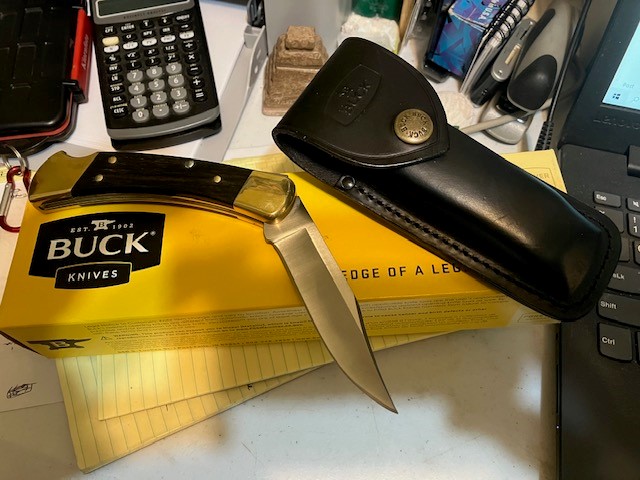What is the single most important tool needed by anyone who lives, explores, hunts, hikes, camps, farms or otherwise spends time away from the masses of humanity? I’m talking anyone who, to some degree big or small, might at anytime on any day in any place be forced into a situation of self reliance … whether that is making a life-saving splint or tourniquet, carving a fuzz stick or other kindling to help get a fire started, or removing a splinter or sharpening a pencil.
A knife! No surprises here … the most versatile tool anyone can carry on or about their person is a sharp blade. The knife was first invented in the Stone Age, and while there’s been countless thousands of variations and improvements since then the reason for having one has remained the same. Nothing works better for general slicing, dicing, poking, prodding, slashing, gashing, gouging, shaving, slivering (well, you get the picture) than a sharp blade with a point – hence, the greatest creation by man of all time.
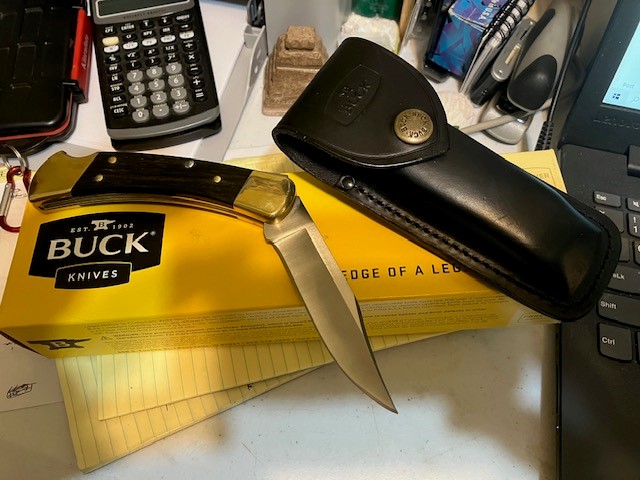
Let’s be more specific
I’ll admit that was a pretty colorful introduction to a story about something as simple as an every day carry (EDC for those among us who like those types of trendy phrases) knife. And trust me, I would never even venture into that black hole where people claim to have the answer to the age-old question of “which fixed or folding blade is the best?” In my 58 years I’ve owned probably around 100 or more knives, about a fourth of which I still have today. And I have only two or three from any one manufacturer, and those are of differing styles or sizes. No two are alike. But every one of them have at least one blade that will cut when called upon to do so.
So to keep it simple, at least for now I’m going to talk about one of America’s classics – the Buck 110 folder and sheath.
An early indoctrination
My history with Buck’s iconic folding knife started with my preceding generation. For many, many decades I saw my dad carry a well-worn Buck 110 in a small leather holster on his belt. It’s owner and caretaker all those years was a husband, dad, granddad, eventually great-granddad, mechanic, heavy equipment operator, carpenter, occasional electrician and plumber, landowner, cattle farmer, hunter and fisherman, and most importantly and seemingly foremost a country preacher.
In fact, it was doing God’s work that brought him to own a then-nearly new Buck 110. About the time I was 12 years old he left the pastorate of the church he had been at since before I was born. For the next five years our family would spend most weekends traveling and playing music at churches across the Midwest. We would sing and play, then dad would usually deliver a sermon. We played countless homecomings, revivals, special services, etc. We ate a lot of fried chicken at church dinners during those years.
But it was during one such service at a small church in southern Missouri that dad came to receive his soon-to-be beloved belt knife. When the offering plate was passed for congregants to give freely to help cover our expenses, one middle-aged man in the crowd (who’s heart had been touched by dad’s words just minutes earlier) had no money to give … neither paper nor coin. But overcome with the desire to somehow bless the man who had just blessed him so much, he quietly slipped his belt open and slid his knife and its leather sheath off and when the offering bag came by he gently slipped it in among the cash and coins.
It wasn’t until after the service was over and the offering was counted by a couple church elders that the unusual “offering” was discovered. About the same time, as others were making their way out, the man eased his way up to my dad and tried to explain why he had done what he had. He felt bad that he didn’t have any money to give that day. But he explained that he was moved to bless this minister of the word in any way he could. Dad, always the gentleman and encourager, told the man he understood and was okay if he needed to take back his knife. After all, where we came from a knife was a person’s most personal tool for day-to-day use. The guy said he had other knives, and would really like to bless dad with this one.
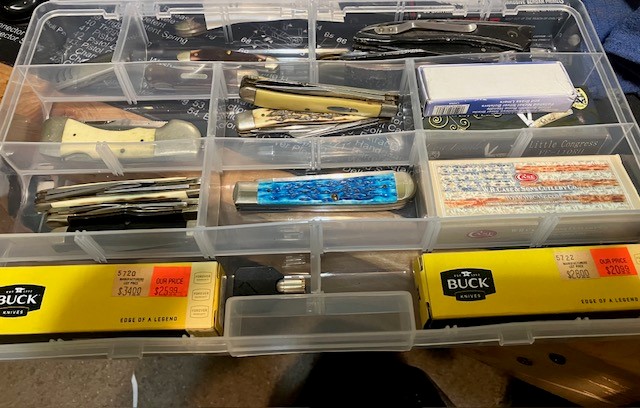
It wasn’t until we had packed up the sound equipment, loaded it up and drove home, that dad took some time to look closer at the knife in the leather sheath. It was a beauty, well sharpened and ready for service. At that time – likely around 1978 or ’79 – the knife was not the iconic piece it’s known as today. It was just a knife … but a very well made one.
From that point on that knife became a part of dad’s wardrobe and “EDC” items. By the time he passed a few years ago he had sharpened the blade down to about half of its original size. And he had gone through several leather sheaths, including at least one handmade model given to him by a leather working friend. In all, that knife was his nearly daily companion for almost 40 years.
Why a Buck 110?
What would make a man carry the same pocketknife for four decades? The same reason that millions of men and women, boys and girls, have bought and carried some variation of the Buck 110 folding knife. One source estimates around 15 million knives (including more than a half-dozen “generations” of the basic design and a long list of tweaks and improvements and “special editions”) have been produced and sold since that first one was built in 1963 in San Diego, California.
A great resource for all things Buck 110 is the website of the Buck Collectors Club found at historyofthe110.com. I’ll not even try to include that nearly endless list of facts and stories, but you can go to the website or Google it for yourself.
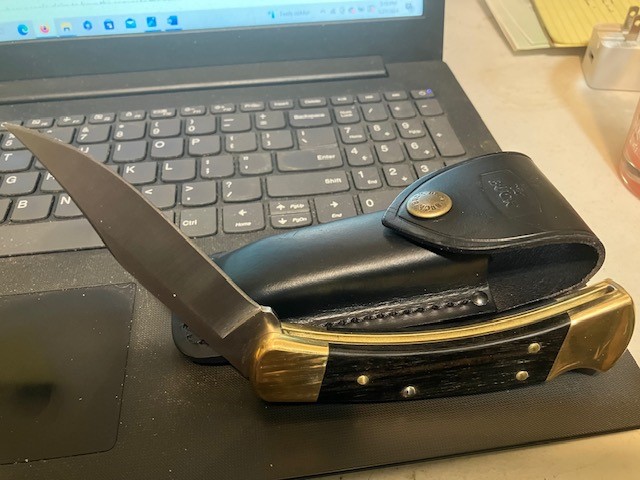
Just like ole dad, after nearly six decades I now find myself carrying a Buck 110 on my side. Unfortunately, it’s not his (which somehow escaped me during the shuffle to sort out his possessions after his untimely death), but a new one I purchased only recently. While I’ve always carried a pocket knife of some sort starting when I was still a pre-teen, the practice of carrying one in a small leather sheath on my belt would have been frowned upon during my two decades as a mid-level manager in a corporate-owned operation.
But these days I’m my own boss. As a self-employed realtor, my daily wear is strictly up to my taste and what my clients are comfortable with. And since I work in a rural area, wearing a small folding knife in a four-inch leather sheath is in no way considered in bad taste or out of line. Quite the contrary, it seems to be accepted and even admired. A lot of my clients are people like you … folks with an interest in the outdoors and being as self-reliant as possible.
In the end
So to drive this point home – yes, pun intended – I’m not saying everyone needs to carry a Buck 110 folding sheath knife. I’m just saying that you should consider it.
There are dozens of quality knife manufacturers and smaller bladesmiths turning out precision pieces with quality steel these days. Maybe you like a thin knife with composite handles (grips, scales, etc.), or perhaps one with a belt clip that you can retrieve, flick open with a move of the wrist or thumb or finger, and be ready to go in a second or less. A locking blade is always a plus as far as safety is concerned.
Maybe a traditional multi-blade folder that fits into your pocket is your cutting tool of choice. It’s a time-honored favorite. In fact, most of the knives I own are of that design. I often switch out carrying them like my wife switches shoe styles with her outfit choices. I’ll often carry a small two- or three-blade folder in my pocket in addition to the Buck 110 on my belt. I tend to lean toward a small to medium-sized pocket knife. On Sundays I like to carry a small pearl or bone handled antique folder that has a high carbon steel blade. I like the look of the worn pearl or bone and the discolored yet razor sharp metal with the higher carbon versus some shiny stainless steel.
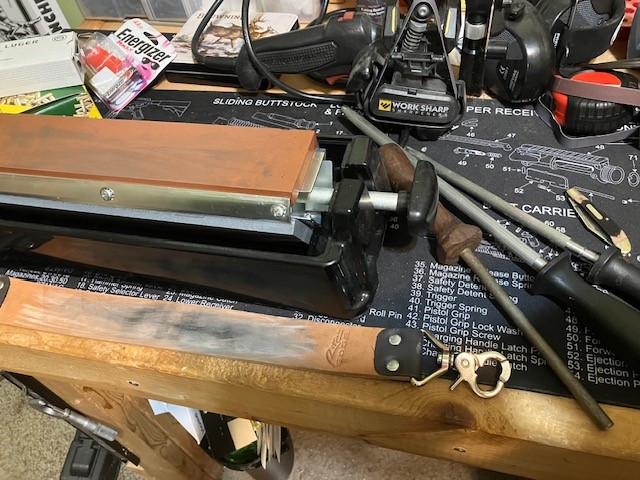
If I’ve convinced you, or you were already a knife carrier, then the next step is to keep it sharp. To learn all about that process you can read my tutorial on blade sharpening at dougsmithrealestate.com. You can find “When it comes to knives … stay sharp“ online at https://dougsmithrealestate.com/when-it-comes-to-knives-stay-sharp/.
So to bring this full circle, if you’re considering spending time anywhere outside the comfort of your own bed, you’d be better prepared if you found and carried a good quality knife. In fact, I can honestly say I don’t know a genuine lover of the outdoors who doesn’t.
Doug Smith is an old soul, an award-winning writer and realtor, lives in an old house in a small town; likes to tinker with and drive old trucks, cars and tractors; farms and hunts land that has been in his family for nearly 200 years; enjoys fishing and hunting; and is married to a young woman (just ask her), and loves her and their grown children and those children’s spouses and all the amazing grandkids so much that even he can’t find the words to express. And in what little free time he has left, he likes to write stories about the things he knows for sure.

